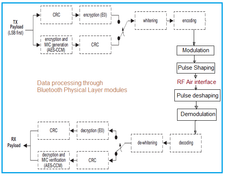UMTS Modulation, Spreading, and Scrambling Explained
Advertisement
UMTS employs several techniques—modulation, spreading, and scrambling—to ensure efficient data transmission. Modulation defines the signal format, spreading broadens the signal across a wider bandwidth, and scrambling adds an extra layer of security. A solid understanding of these concepts allows for fine-tuning network parameters, leading to improved performance and reduced interference.
Modulation in UMTS
- UMTS uses Quadrature Phase Shift Keying (QPSK) for downlink transmission and Binary Phase Shift Keying (BPSK) for uplink transmission.
- QPSK Modulation: Each symbol represents two bits. Phase shifts differentiate between symbols, enabling higher data rates while maintaining relatively good noise immunity.
- DPCCH and DPDCH are BPSK modulated.
Spreading in UMTS
- Spreading involves multiplying the original data with a higher-rate spreading code, resulting in a spread spectrum signal with an increased bandwidth.
- The spreading factor determines the trade-off between bandwidth and data rate.
- Spreading offers robustness against interference and allows multiple users to share the same frequency band.
Scrambling in UMTS
- Scrambling is applied after spreading to further differentiate user data and reduce cross-correlation between signals.
- Each base station (Node B) uses a unique scrambling code, enabling UEs (User Equipments) to identify signals originating from specific base stations.
- Scrambling doesn’t alter the bandwidth but provides an extra layer of separation between users.
- Scrambling also leaves the bit rate unchanged. Its primary function is to help distinguish signals from different sources.
- Gold codes, known for their good correlation properties, are used for this purpose.
- Both long and short types of scrambling codes are available. In the uplink, it separates different UEs. In the downlink, it’s used for cell/sector separation.
Process Flow
- Data is first spread using the channelization code (spreading code).
- The spread signal is then scrambled using the scrambling code.
- Finally, the scrambled signal is modulated using QPSK or BPSK before transmission.
Synchronization using Synchronization Code
These codes are designed with good auto-correlation functionality, making them ideal for initial cell search and synchronization in the downlink. Primary sync codes are derived using a Golay sequence, and secondary words are derived from a Hadamard sequence.
Conclusion
Grasping UMTS modulation, spreading, and scrambling techniques is vital for optimizing data transmission and ensuring high-quality service in 3G networks. It provides a solid foundation for tackling challenges related to signal integrity and transmission efficiency.
Advertisement
 RF
RF






